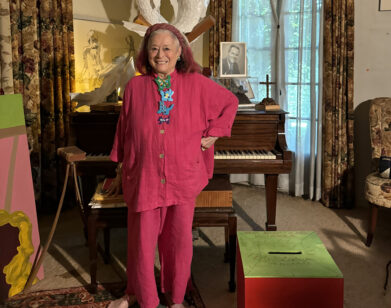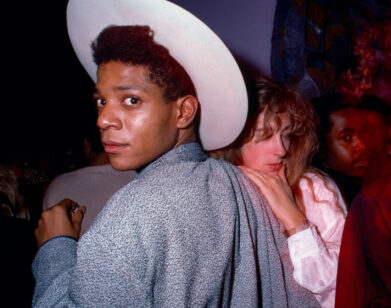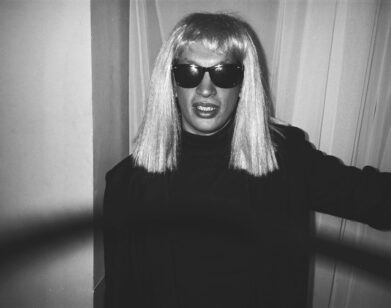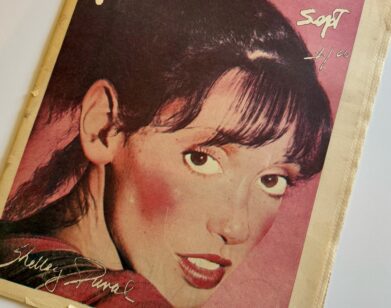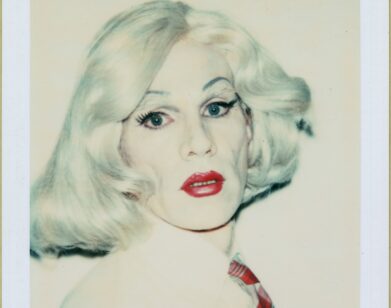Artist Enoc Perez Walks Us Through the Hotel Rooms of Rockstars
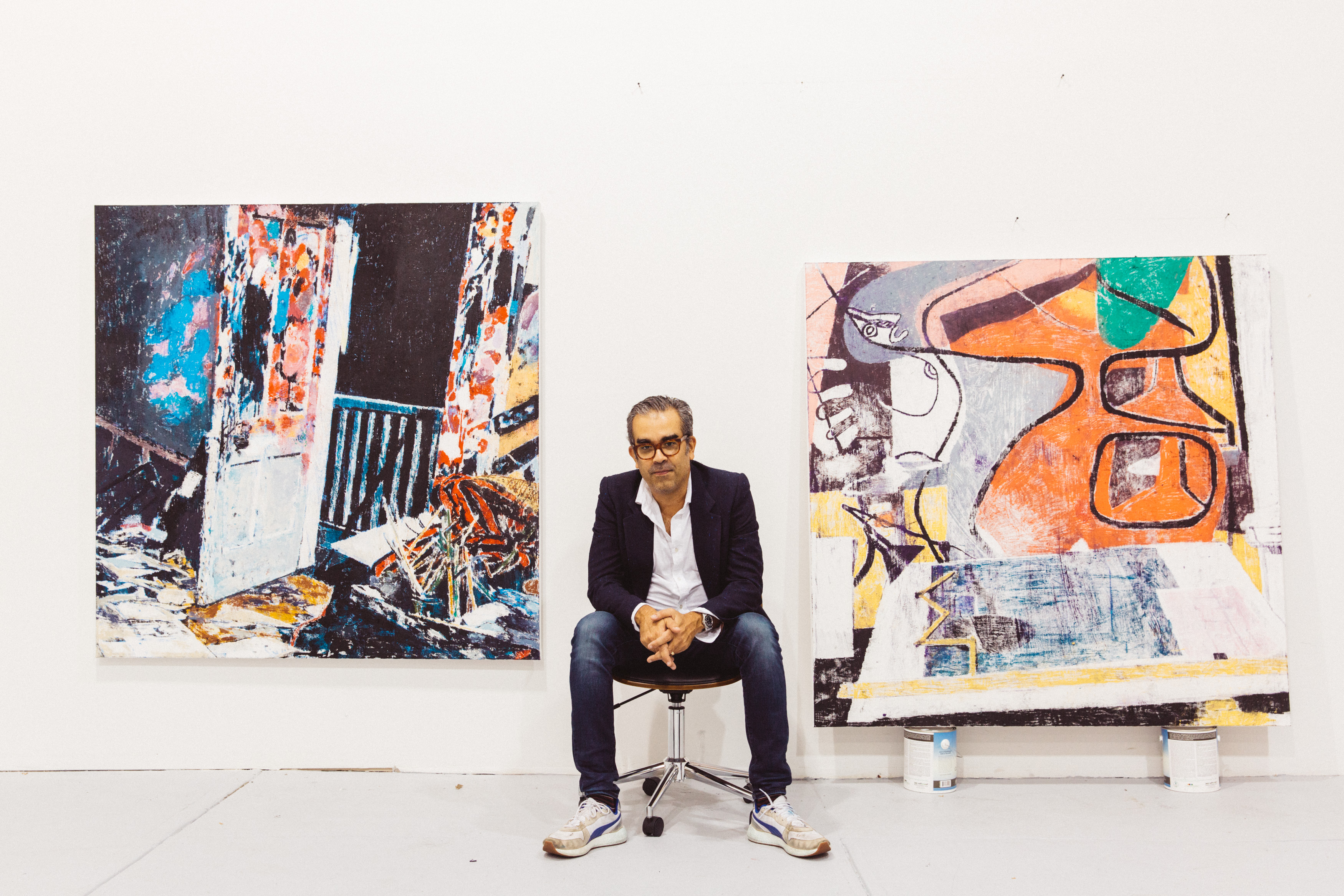
Artist Enoc Perez. Photo by Frederick Egan Castleberry. Courtesy of the artist and Ben Brown Fine Arts.
There was once a time when the lifestyles of the rich and famous were a delicious mystery, and their exclusivity drew us in closer in an attempt to peek behind the curtain. The Puerto Rican artist Enoc Perez pulls up those blinds in his new exhibit, The Cinematic Self, which runs from October 2 through November 22 at the Ben Brown Fine Arts gallery in London. In The Cinematic Self, Perez gives a nod to the figures who have influenced him throughout his life by opening a gateway into their lives, and homes, with his paintings. The exhibition humanizes these larger-than-life figures, allowing the viewer to leisurely examine Andy Warhol’s medicine cabinet, or rifle through the books on Mick Jagger’s mantel, unimpeded by their presence. Perez’s subjects include rock stars like Elvis Presley, industry tycoons like Nelson Rockefeller, and fellow artists like Charles Jeanneret-Gris (a.k.a. Le Corbusier).
Where his previous works focused on exteriors, The Cinematic Self furthers his tradition of imagining beautiful spaces usually filled with people rendered completely empty. “I made these beautiful paintings of these modernist buildings,” Perez told Interview. “A lot of those buildings today are in ruins. They’re abandoned. That was the utopia I was painting 25 years ago.” His art is continually drawn towards symbols of greatness, from soaring skyscrapers like the Freedom Tower in New York and Marina Towers in Chicago, to a timeless bottle of Puerto Rican rum, in “31.” With The Cinematic Self, these symbols are not just of one object, but of an entire environment that was once loved and lived in, where suddenly a simple office space or a bathroom’s wallpaper have significance. When asked why he wouldn’t add his own studio to the roster of rooms preserved by his brush, he said, “I’d rather see the space of Sigmund Freud or somebody interesting. Why would anybody want to look at my space?” Below, the artist gives us a tour of some of the interiors he’s painted, including David Bowie’s sleeping car in Siberia, Nelson Rockefeller’s apartment, and Fred Hughes’s office inside Andy Warhol’s Factory.
———
“Fred Hughes’s Factory Office, 22nd East 33rd St, New York”
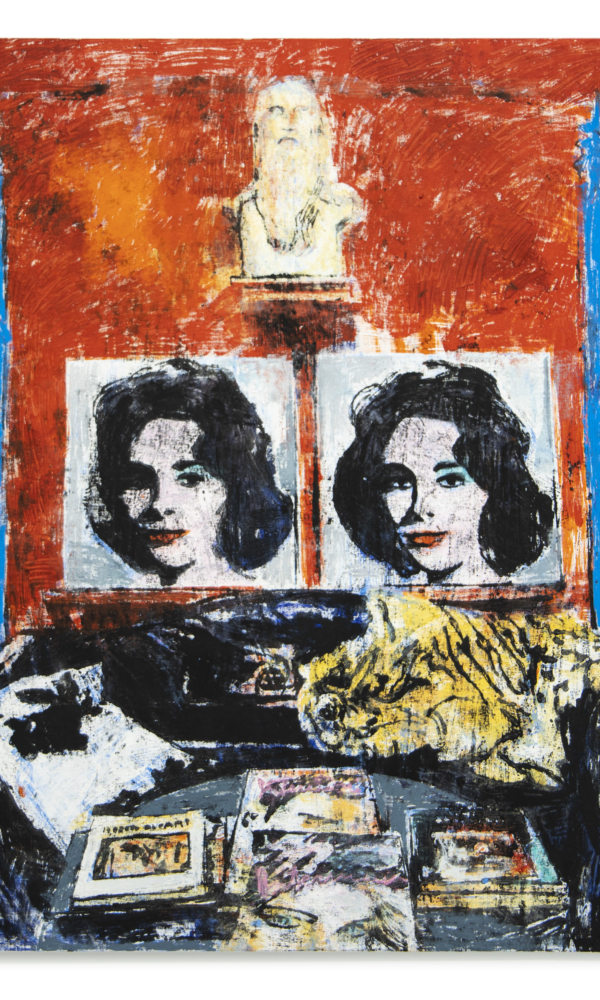
“You know what’s interesting? I arrived in New York in 1986, so I was 19. I went to see the shows that they were doing at the time. That’s what brought me to the city, painters like [Andy] Warhol, like Jean-Michel Basquiat. The oil paints that I use are oil sticks, because when I was young, I was trying to make my own little Jean-Michels at age 19. I have met throughout the years, and count among my friends, a lot of the people that were around Warhol, that were friends with him and that knew him well. Collectors, artists, dealers. In that way, I’m very fortunate, and I’m very close to people that worked close with Jean-Michel Basquiat as well. I remember reading about all these people in The Andy Warhol Diaries, and these people are now real in my life. But I never met the artist.”
_ _ _
“Studio of Francis Bacon, 7 Reece Mews Kensington, London”
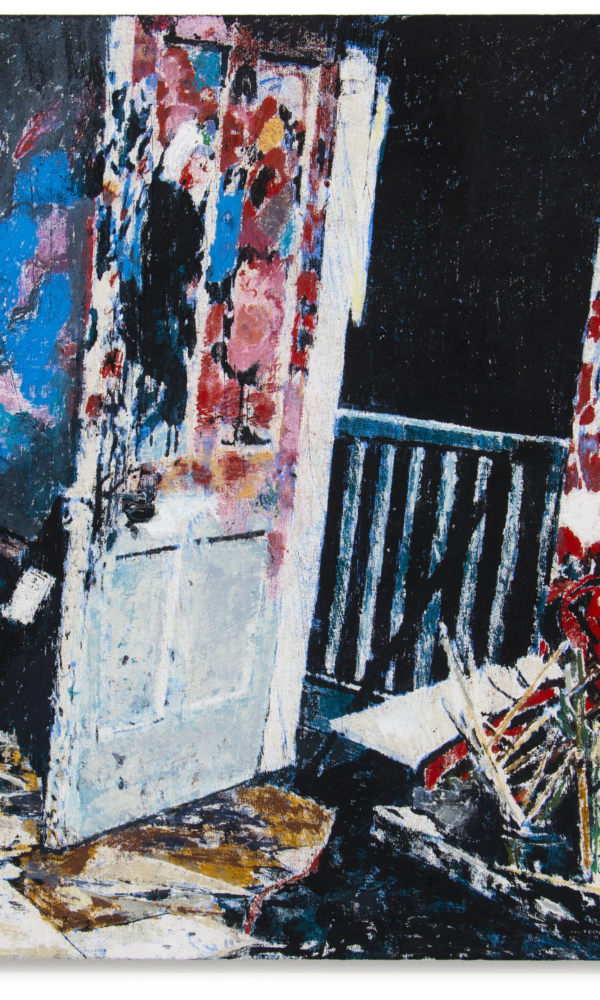
“The spaces—the fact that some are messy and kind of crazy, it’s okay. It’s cool because it’s who the person was, and that’s how it worked for them. I didn’t really get into judging them. Actually, I think if I’m going to paint them, it’s because I either love the work or there’s something in the space that I think is beautiful or makes a great painting. For me, they’re really just faces that I would love to look at. For example, talking about the Bacon, that insanity of that studio, the darkness of it, I think that goes to the essence of the artist. So it’s important to just paint that as it was.”
———
“Bologna Home and Studio of Giorgio Morandi, Via Fondazza 36”
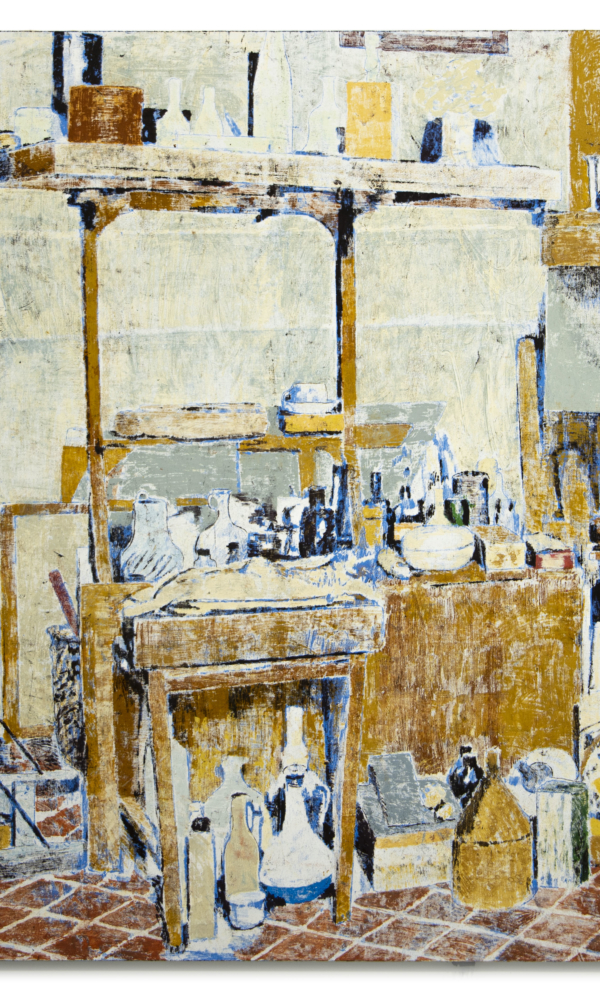
“I had a show at the Dallas Contemporary Museum in Texas. It was a show based on the work of Philip Johnson. It turned out to be, for me, a very cerebral show and very deliberate. After I finished that show, I was also turning 50, and I was making work but not feeling very satisfied with it. I decided to close the studio for a year. Close the studio to visits, but just to lock myself in there and work to see what else I could come up with. The interiors were the first thing that I thought, ‘This is interesting to me.’ In a way, you’re always painting yourself, even with the buildings and everything. I thought, ‘You know what? It’s probably a nice thing to look within.’ I hear that when people turn 50, this is kind of almost like a typical thing that happens. They start thinking about their lives and stuff, and I guess that cliché is true, at least for me.”
_ _ _
“David Bowie’s Sleeping Car, Siberia, 1973”
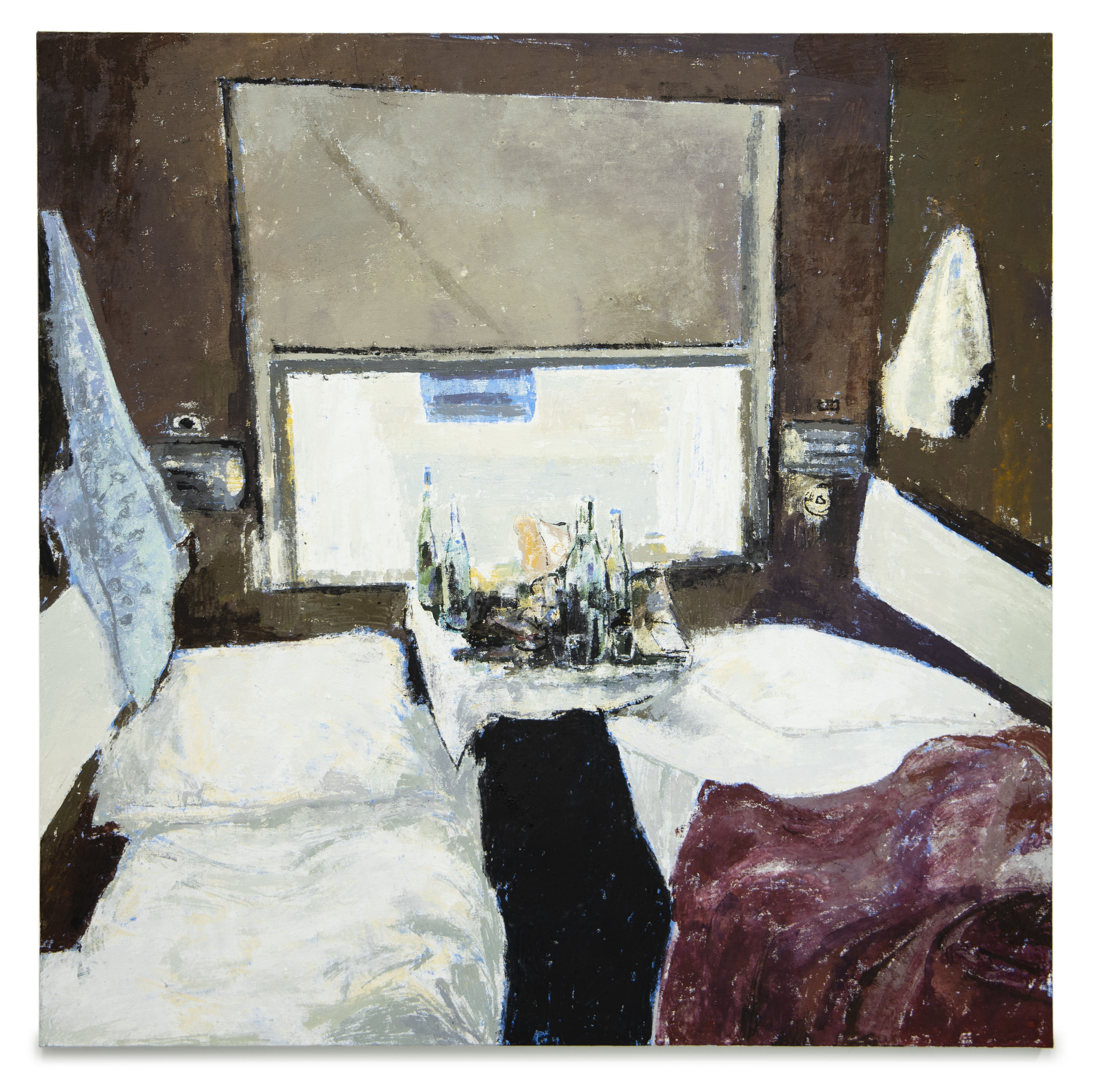
“When you talk about Bowie, the Rolling Stones, you talk about that caliber of artist, that these are genius-level people. Everything that they touch or are around gets this aura of greatness or desirability, in an intellectual way, like Picasso. I love reading John Richardson on Picasso because this guy probably figured out what he was eating for lunch and liked for dinner. I want to know every detail of how these guys lived, and what they liked, and what they talked about. A glimpse into that brilliance. I think the interiors are very much about that hope of getting a glimpse into these creatives—whoever is brilliant at what they do and how these minds worked. That, to me, is just a kick.”
———
“Rolling Stones in Residence, Villa Nellcôte”
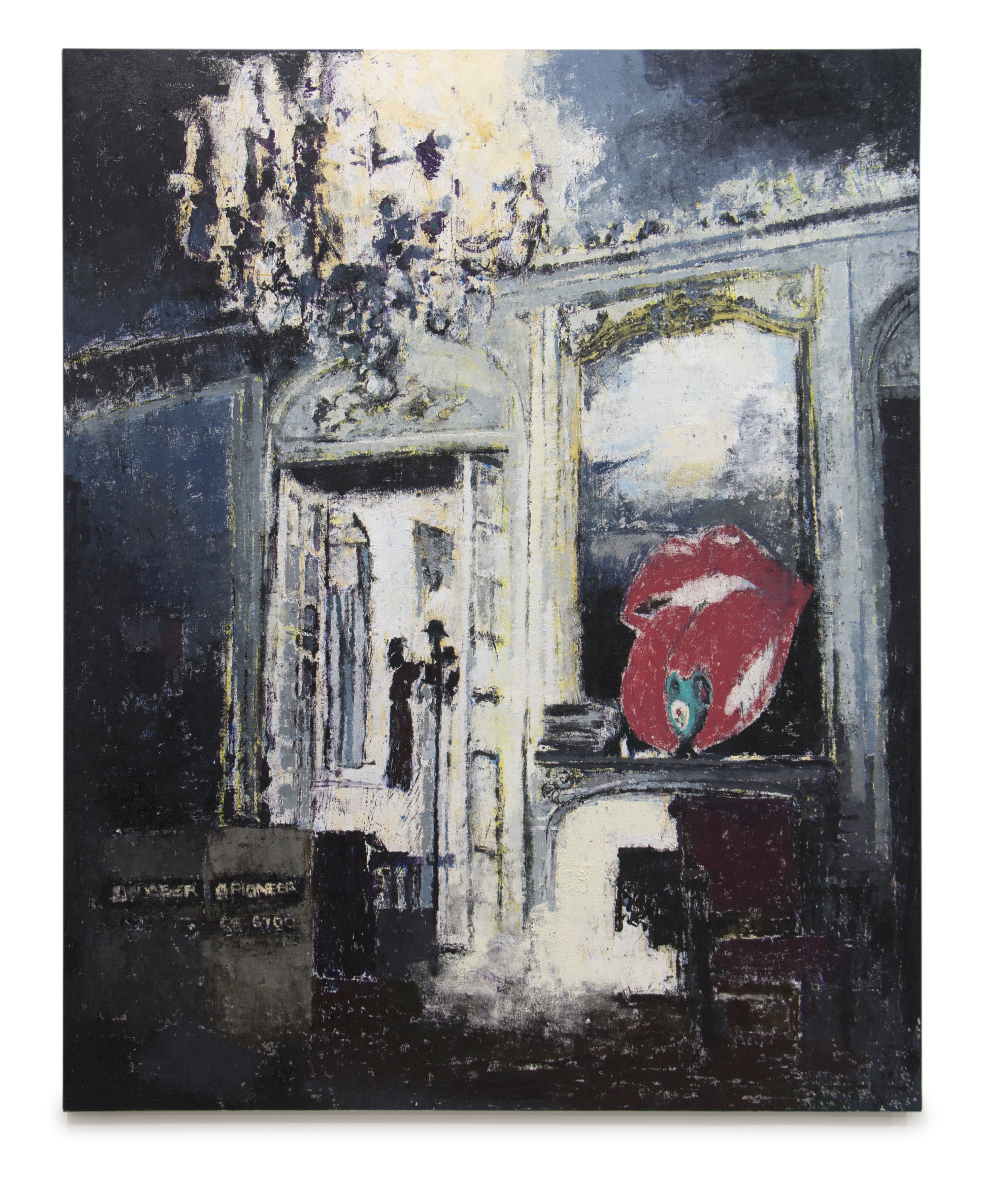 “I was thinking about the interiors more as portraits. I was thinking of the interiors more as like making my own encyclopedia of cool. These are all people that I like, and I just wanted to do this register of these beautiful spaces of people that have been influential in my life or influential to me. Remember the Stones and Bowie? Anything that that level of genius have touch or been around, I want to know about, or I want to be around it as if it were contagious.”
“I was thinking about the interiors more as portraits. I was thinking of the interiors more as like making my own encyclopedia of cool. These are all people that I like, and I just wanted to do this register of these beautiful spaces of people that have been influential in my life or influential to me. Remember the Stones and Bowie? Anything that that level of genius have touch or been around, I want to know about, or I want to be around it as if it were contagious.”
_ _ _
“New York Apartment of Nelson Rockefeller, 810 Fifth Avenue”
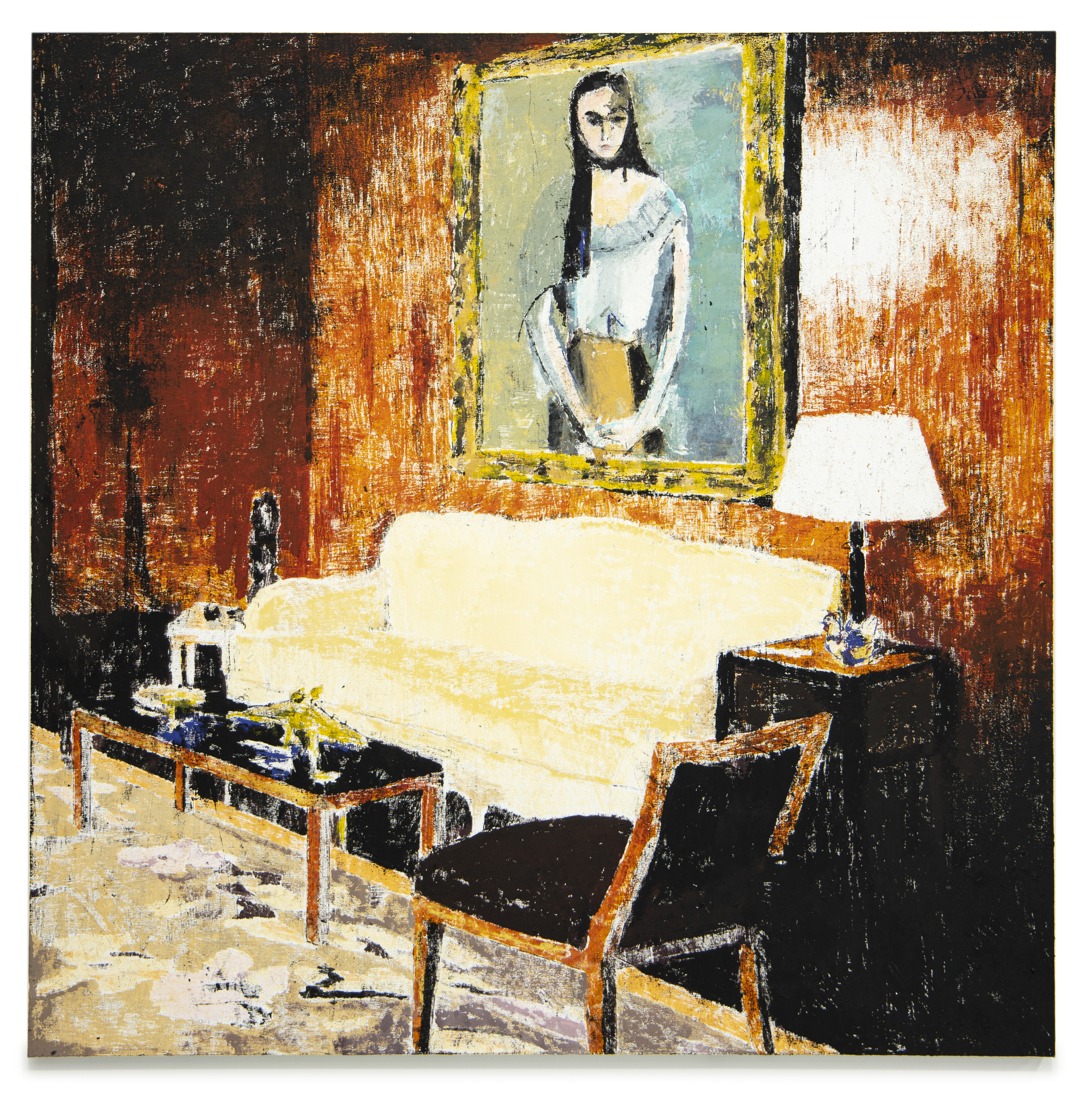
“For me, strictly, I don’t put people in the buildings. I don’t put people in the interiors. It’s always a rule. I can do portraits of people, and I love doing portraits of people. But when it comes to the spaces or to the buildings, they have to be portraits of things. It’s like an attraction. An interior is like a mental construct. It’s like a muscle, part of the brain or part of the lung. It’s a reflection of their mind.”
_ _ _
“Residence of Elvis Presley, 3764 Elvis Presley Boulevard, Memphis, TN Graceland, Jungle Room”
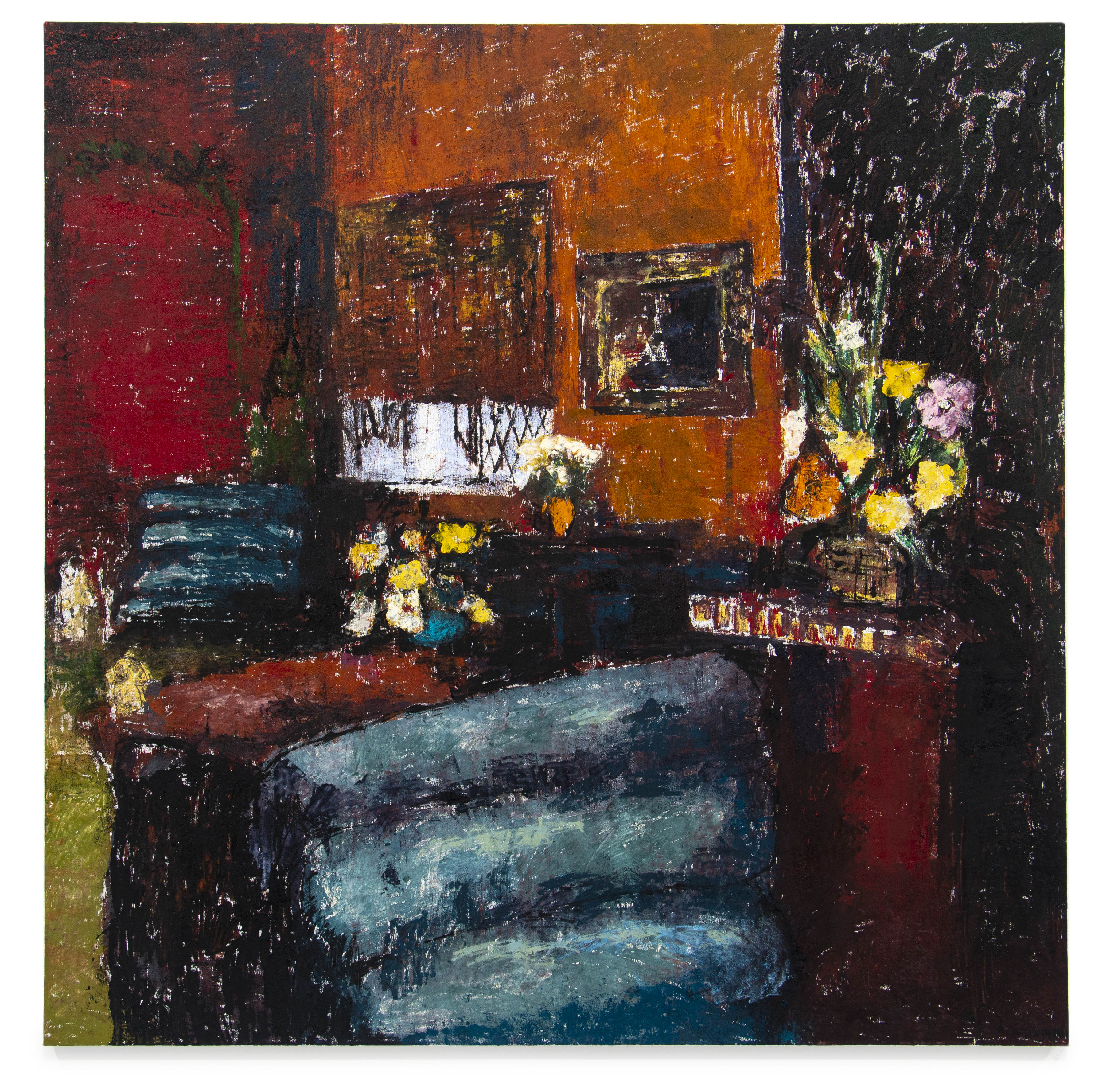
“I think that solitude is something that is a very much a part of my work. When you think about Latin America, solitude is central to literature and poetry of Latin America. Certainly, solitude is, for me, like a big element in my work. It’s kind of like a populated solitude, but still it’s something that comes built into my work.”

